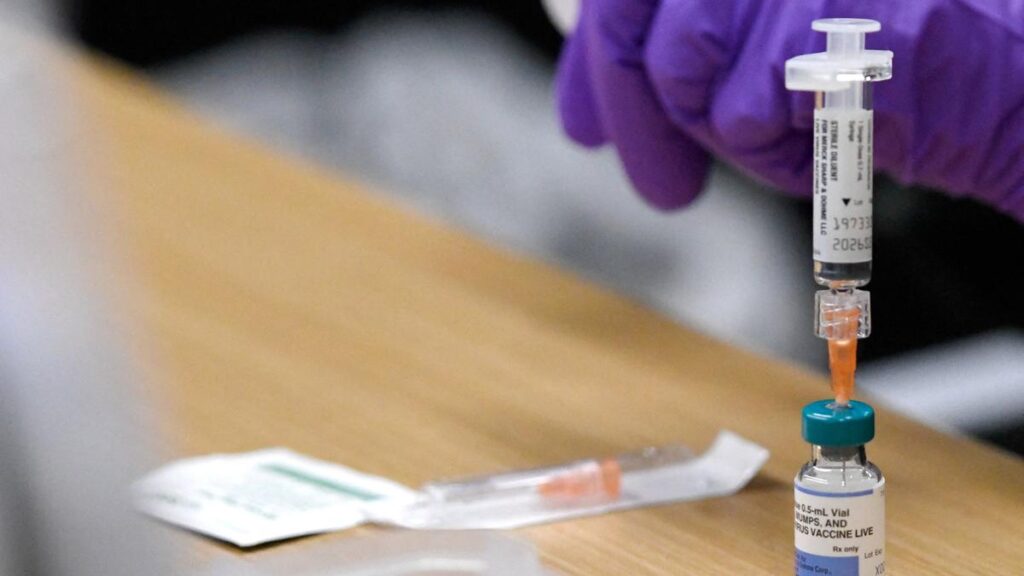India is at the forefront of a critical global challenge in childhood vaccinations, with a staggering 1.44 million children classified as “zero-dose” in 2023, according to a new analysis from the Global Burden of Disease Study Vaccine Coverage Collaborators, published in The Lancet, on June 25, 2025. The study also highlights a troubling stagnation in worldwide immunisation efforts, leaving millions of vulnerable children, particularly in India and other South Asian nations, susceptible to deadly, preventable diseases.
Despite significant progress in expanding vaccine coverage between 1980 and 2023, the momentum has significantly faltered since 2010, the study found. By 2023, an estimated 15.7 million children globally had received no doses of the diphtheria, tetanus, and pertussis (DTP) vaccine in their first year of life – with India being a significant contributor to this cohort. Measles vaccination coverage declined in 100 of 204 countries between 2010 and 2019, while 21 of 36 high-income countries experienced declines in coverage for at least one vaccine dose against diphtheria, tetanus, whooping cough, measles, polio, or tuberculosis.
More than half of these 15.7 million unvaccinated children reside in just eight countries, with India’s 1.44 million zero-dose children placing it as the second-highest globally, behind Nigeria. South Asia as a region account for a substantial 13% of these vulnerable children, emphasising the concentrated nature of this crisis within the subcontinent.
Pandemic fall-out
The COVID-19 pandemic severely exacerbated existing challenges, leading to sharp declines in global vaccine coverage rates from 2020 onwards. The study estimates that between 2020 and 2023, approximately 15.6 million children worldwide missed their full three doses of the DTP vaccine or a measles vaccine.
“Despite the monumental efforts of the past 50 years, progress has been far from universal. Large numbers of children remain under- and un-vaccinated”, said senior study author Jonathan Mosser from the Institute for Health Metrics and Evaluation (IHME), University of Washington, United States.
“Routine childhood vaccinations are among the most powerful and cost-effective public health interventions available, but persistent global inequalities, challenges from the COVID pandemic, and the growth of vaccine misinformation and hesitancy have all contributed to faltering immunisation progress. These trends increase the risk of outbreaks of vaccine-preventable diseases, including measles, polio, and diphtheria, underscoring the critical need for targeted improvements to ensure that all children can benefit from lifesaving immunisations,” Dr. Mosser added.

2030 goals may remain unmet
The authors of the study said that these latest estimates should be taken as a clear warning that global immunisation targets for 2030 will not be met without ‘transformational improvements in equity’.
The authors strongly advocate for concerted efforts to combat vaccine misinformation and hesitancy, emphasising that “Vaccination services must prioritise trust-building, engage community leaders, and tailor interventions with more culturally appropriate local strategies to improve vaccine confidence and uptake.”
Professor Hai Fang, China Center for Health Development Studies, Peking University, China (not involved with the study) said, “In light of the potential decline in international aid from high-income countries, there is an even greater need to strengthen routine childhood vaccination coverage at all levels. Sustained investment and targeted strategies will be essential to maintain progress, close immunisation gaps, and ensure equitable access to life-saving vaccines.”

What does this mean for India
For India, this means intensified efforts are required to reverse the trend. The findings serve as a critical alarm bell for public health authorities, highlighting the urgent need for robust, equitable immunisation strategies to safeguard the country’s vast child population against preventable diseases.
Experts said that for a country as diverse as India, this calls for highly localised and culturally sensitive vaccination programmes.
A significant two-thirds (65%) of the zero-dose children who need to be reached by vaccination between 2023 and 2030 are concentrated in sub-Saharan Africa and South Asia, with the latter accounting for 1.33 million.
“The challenge now is how to improve vaccine delivery and uptake in areas of low coverage. The diversity of challenges and barriers to immunisation vary widely between countries and within communities, with rising numbers of displaced people and growing disparities due to armed conflict, political volatility, economic uncertainty, climate crises, and vaccine misinformation and hesitancy, underscoring the need for new, tailored solutions,” said lead author of the study, Emily Haeuser.
The world has made unprecedented progress in vaccinating children against life-threatening disease since World Health Organisation (WHO) established the Expanded Programme on Immunization (EPI) in 1974. Over the past 50 years, EPI has vaccinated more than 4 billion children, preventing the deaths of an estimated 154 million children worldwide and providing a total of 10.2 billion years of full health. However, vaccine-preventable disease outbreaks persist, reflecting long standing inequalities in vaccine coverage worldwide, and pose a growing global risk.
Published – June 25, 2025 02:44 pm IST

